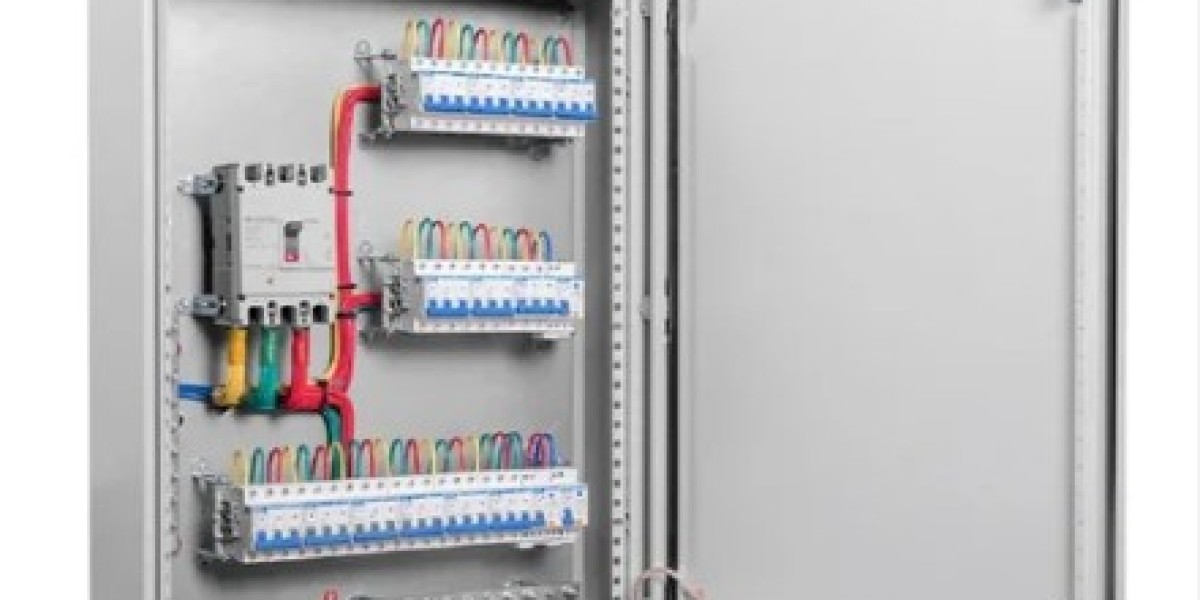When a storm passes or when a yard suddenly loses power the outdoor electrical distribution panel often gives the first clues that something needs attention. Signs such as unusual noises, warm surfaces, persistent trips, or visible corrosion suggest professional assessment rather than casual tinkering. Knowing which symptoms call for a technician helps site managers protect people and equipment and keeps operations moving with fewer surprises.
Begin by watching for behavior that changes suddenly. Circuits that used to run steadily but now trip under moderate load hint at compromised connections or an internal fault. A humming or buzzing that grows louder when loads increase points to loose terminals or stressed components. If breakers or fuses reset repeatedly after a short interval, isolation and inspection by a qualified electrician should follow to avoid hidden hazards.
Physical damage is another clear indicator. Panels that show cracked paint, bent doors, or hinges that no longer close tightly often suffer seal loss. When seals fail, moisture and dust can enter and begin a slow degradation process that ends in corrosion or shorting. Rusted fasteners, chalky metal surfaces, or greenish deposits at terminals mean a hands on check is required before a minor defect becomes a service call that affects many circuits.
Water entry after a heavy rain or an overflowing drain needs prompt response. If puddles appear under a cabinet, or if sockets show wet staining, do not touch equipment. Isolate the feed if safe to do so and call a licensed electrician to evaluate internal condition and to dry and test components. Moisture can hide behind panels and in accessory trays so a thorough inspection keeps future faults from appearing when temperatures change.
Heat is a serious warning sign. Terminals that feel noticeably warm to touch during normal operation indicate elevated resistance at contacts. Over time that heat degrades insulation, increases wear, and opens the door to arcing. Leave live checks to trained personnel with proper instruments and protective gear. A professional can measure contact resistance, re torque connections to specification, and recommend targeted repairs that restore safe operation.
Noise and odors are immediate red flags. Burning smells, ozone like scents, or sizzling sounds call for an immediate shutdown of affected circuits and consultation with a qualified technician. Those symptoms often precede visible damage and may indicate insulation breakdown or overloaded components that warrant a controlled isolation and a careful investigation.
After external impacts such as collisions or heavy maintenance activity call an electrician for a preventive check. A seemingly minor knock can loosen clamps or misalign internals so what looks cosmetic may hide connection issues. A quick professional review reduces the chance that an unnoticed fault leads to downtime during a busy shift.
Routine checks reduce surprises. If your site lacks a simple inspection rhythm include a visual review of seals fasteners and door operation after storms and after cleaning cycles. Keep a short log of observed changes and hand it to the technician when a service visit is scheduled. That history speeds diagnosis and helps the technician focus on likely problem areas rather than repeating broad tests.
Do not ignore regulatory or permit requirements. Some repairs require documented intervention and a post service inspection. A licensed electrician handles paperwork and testing protocols that inspectors expect. That compliance preserves warranties and reduces future administrative friction when the site changes hands or when upgrades are planned.
Safety procedures are vital during any intervention. Isolation procedures, verified absence of voltage and proper protective equipment keep people safe while work proceeds. Trained technicians follow consistent steps and carry diagnostic gear that reveals hidden issues without exposing crews to avoidable risk. When an intervention involves adding monitoring or replacing parts ask for a note describing the work and parts used so future checks refer to precise changes.
If you suspect compromised seals, repeated nuisance trips, unusual heat, visible corrosion, or water entry arrange a professional visit. Prompt assessment reduces risk and avoids larger repairs later. For product options that support resilient outdoor installations and for spare parts and accessory kits that ease maintenance consult https://www.nante.com/ where technical notes and handling guidance can help you match a solution to site exposure and service plans. Contact the supplier to discuss installation choices and to obtain accessory lists that support predictable upkeep.







